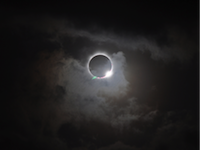Our Sun is surrounded by a jacket of gases called an atmosphere. The corona is the outermost part of the Sun's atmosphere.
The corona is usually hidden by the bright light of the Sun's surface. That makes it difficult to see without using special instruments. However, the corona can be seen during a total solar eclipse.
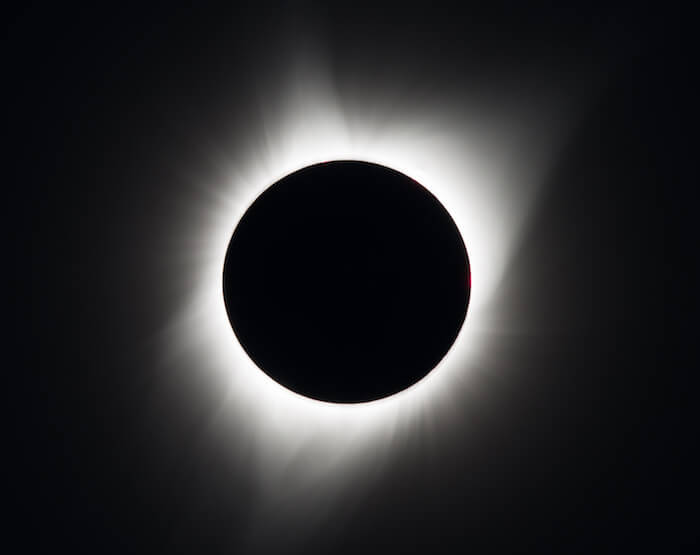
Image of the solar corona during a total solar eclipse on Monday, August 21, 2017 above Madras, Oregon. Credit: NASA/Aubrey Gemignani
During a total solar eclipse, the moon passes between Earth and the Sun. When this happens, the moon blocks out the bright light of the Sun. The glowing white corona can then be seen surrounding the eclipsed Sun.
Caution!
Eye Safety During a Total Solar Eclipse
Except during the brief total phase of a total solar eclipse, when the Moon completely blocks the Sun’s bright face, it is not safe to look directly at the Sun without specialized eye protection for solar viewing.
For safety information, visit the NASA Eclipse Safety Page.
Why is the corona so dim?
The corona reaches extremely high temperatures. However, the corona is very dim. Why? The corona is about 10 million times less dense than the Sun’s surface. This low density makes the corona much less bright than the surface of the Sun.
Why is the corona so hot?
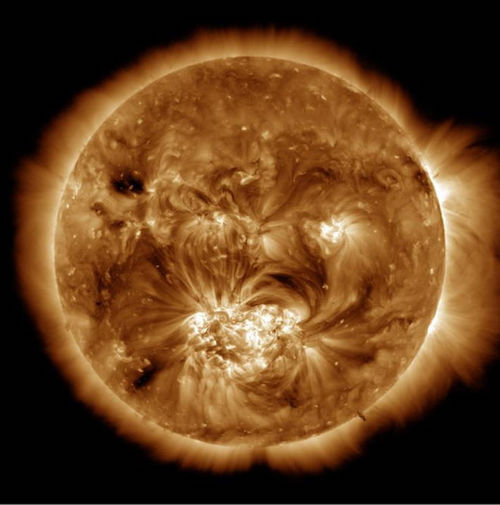
Image of corona from NASA's Solar Dynamics Observatory showing features created by magnetic fields. Image credit: NASA
The corona’s high temperatures are a bit of a mystery. Imagine that you’re sitting next to a campfire. It’s nice and warm. But when you walk away from the fire, you feel cooler. This is the opposite of what seems to happen on the Sun.
Astronomers have been trying to solve this mystery for a long time. The corona is in the outer layer of the Sun’s atmosphere—far from its surface. Yet the corona is hundreds of times hotter than the Sun’s surface.
A NASA mission called IRIS may have provided one possible answer. The mission discovered packets of very hot material called "heat bombs" that travel from the Sun into the corona. In the corona, the heat bombs explode and release their energy as heat. But astronomers think that this is only one of many ways in which the corona is heated.
Coronal loops and streamers
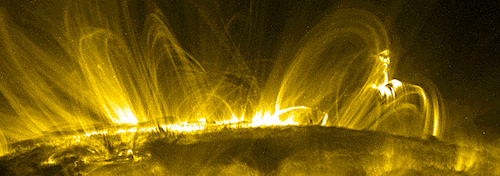
Coronal loops. Image credit: NASA/TRACE
The surface of the Sun is covered in magnetic fields. This is the force that makes magnets stick to metal, like the door of your refrigerator.
The Sun's magnetic fields affect charged particles in the corona to form beautiful features. These include streamers, loops, and plumes. We can view these features in detail with special telescopes.
How does the corona cause solar winds?
The corona extends far out into space. From it comes the solar wind that travels through our solar system. The corona's temperature causes its particles to move at very high speeds. These speeds are so high that the particles can escape the Sun's gravity.
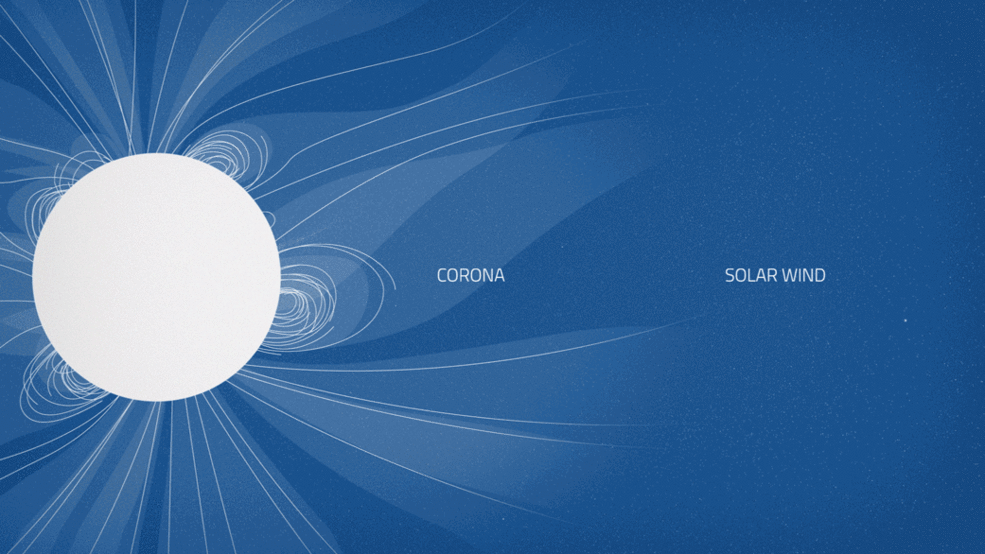
Conceptual animation (not to scale) showing the Sun's corona and solar wind. Image credit: NASA's Goddard Space Flight Center/Lisa Poje



